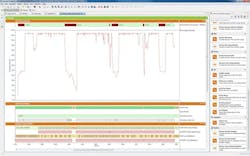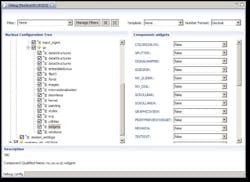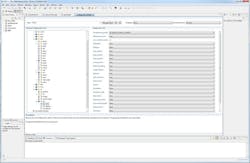Mentor Graphics infuses Nucleus RTOS with capabilities for microcontroller and multicore applications
WILSONVILLE, Ore., 28 Aug. 2014. Mentor Graphics Corp. (NASDAQ:MENT) has announced a new version of the Mentor Embedded Nucleus real-time operating system (RTOS) targeting high-performance, next-generation applications for connected embedded devices.
The Nucleus RTOS process model is expanded to include ARM Cortex M-based cores, enabling software developers to use a single embedded operating system to increase system reliability through memory partitioning for the entire spectrum of ARM cores, facilitating code reuse across an entire product family comprising low-end to high-end devices.
New in this release is a multicore framework to manage inter-process communication (IPC) and processor life cycle for complex heterogeneous system-on-chip (SoC) and enhanced Nucleus RTOS graphics capabilities with Imagination and Vivante GPU support.
System developers can now use an RTOS that is scalable to conform to resource limitations typical of microcontroller (MCU)-based devices while still providing space partitioning to improve system reliability. By using the memory protection unit (MPU) on ARM Cortex M- based cores, the Nucleus RTOS process model creates memory partitioning without the need to implement virtual memory, maintaining a lightweight operating environment that can be executed in devices with limited memory by “executing in place” out of flash devices. The Nucleus RTOS process model improves system reliability for devices with aggressive dependability requirements, and for devices with safety requirements such as those designed for industrial and medical devices, officials say.
Today’s complex SoC architectures combine application-class and microcontroller-class cores, driving the consolidation of heterogeneous operating environments on to a single device. To address these complexities Nucleus RTOS includes the Mentor Embedded Multicore Framework (MEMF) for asymmetric multi-processing (AMP) enablement. MEMF enables developers to integrate Nucleus RTOS, Linux, and bare metal-based applications and manage the challenges associated with IPC, resource sharing, and processor control within a heterogeneous multi-OS environment. Developers can control the boot-up and shut-down of individual cores on a SoC, allowing applications to maximize compute performance or minimize power consumption based on the use case.
"Xilinx is pleased to have worked with Mentor on the development of the Mentor Embedded Multicore Framework to expand Asymmetric Multiprocessing capabilities on our Zynq-7000 All Programmable SoCs,” says Tomas Evensen, chief scientist of embedded software at Xilinx Inc. "The MEMF provides a scalable software framework to address the heterogeneous multi-OS computing needs of our customers who combine multiple hardened processors and soft core processors in the FPGA fabric.”
Dynamic user interfaces (UI) are computationally intensive and often require the acceleration provided by the graphics processor unit (GPU) in today’s complex SoCs. The Nucleus RTOS makes use of open standards to harness the power of the GPUs in leading ARM Cortex A-based SoCs with OpenGL/ES integration. Rich graphics are enabled with Qt® for Nucleus RTOS to generate compelling interactive UIs. For resource-limited devices, the Embedded Wizard from Tara Systems is integrated with the Nucleus RTOS for memory-efficient yet rich UIs.
The Mentor Embedded Nucleus product is available now, with starting list price at $5,000 (USD).

Courtney E. Howard | Chief Editor, Intelligent Aerospace
Courtney enjoys writing about all things high-tech in PennWell’s burgeoning Aerospace and Defense Group, which encompasses Intelligent Aerospace and Military & Aerospace Electronics. She’s also a self-proclaimed social-media maven, mil-aero nerd, and avid avionics and space geek. Connect with Courtney at [email protected], @coho on Twitter, on LinkedIn, and on Google+.



